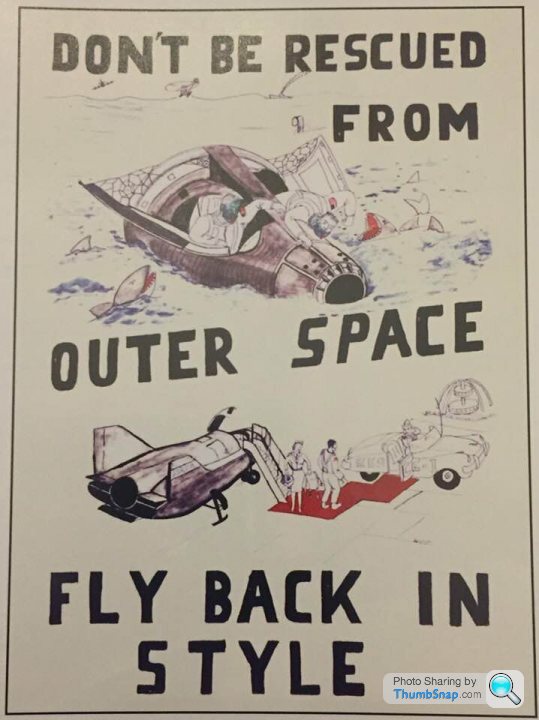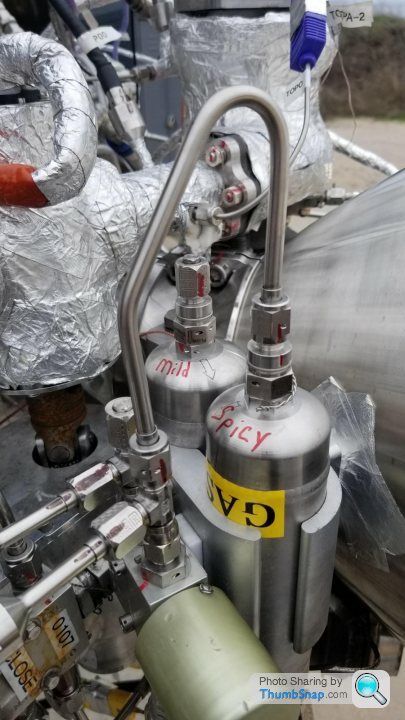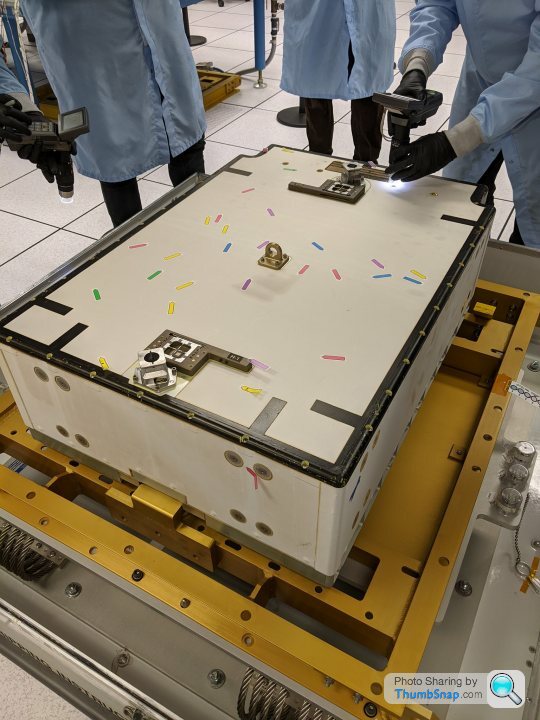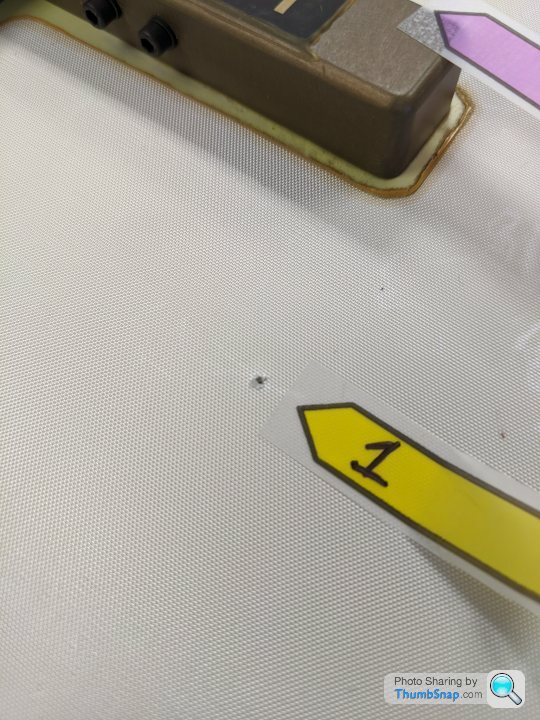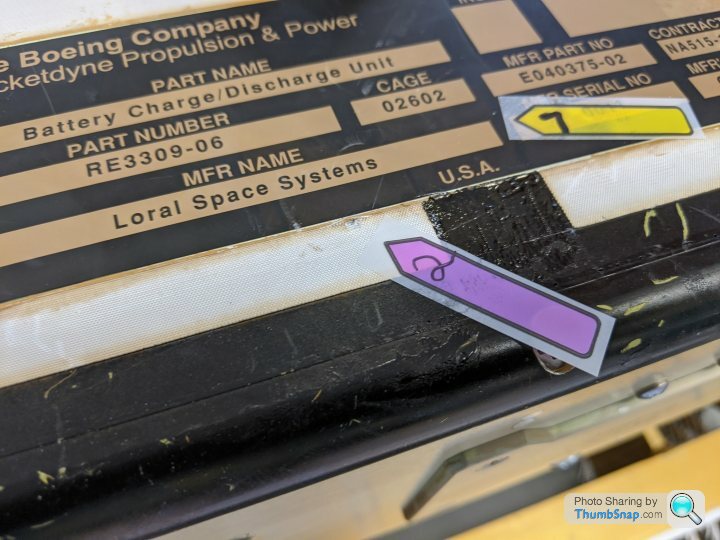Saturn V anecdote
Discussion
Eric Mc said:
MartG said:
Slide set from a lecture showing lunar surface photos which have been colour corrected to show what the Apollo astronauts actually saw ( instead of the rather washed-out scan s previously available ) - showing just how orange Jack Schmidt's 'orange soil' actually was
https://gsa.confex.com/gsa/2018AM/webprogram/Hando...
Amazing if accurate.https://gsa.confex.com/gsa/2018AM/webprogram/Hando...
If you look at the TV images of the site, you can see the orangey colour. But it doesn't show up that sharply on TV.
From J Harvey LeBlanc:
Some of the “hi tech” tools I used as Design Engineer on the Saturn V Rocket, used to get men to the moon in the 1960s!! Note, no electronic computers! lol. Our Design Engineering work areas, at North American Aviation, were made up of several huge Drawing Rooms to accommodate several hundred engineers. We all had a drafting machine, a florescent light, a wooden stool, a 10” slide rule and pocket protector with about ten pencils! We came to work carrying our coffee in a thermos and our lunch in a metal lunch box (like the black one shown behind the first guy in the next photo.) We did our analysis with the slide rules and the drawings were made on paper utilizing the drafting machines. Few of us had drafting machines at the beginning of the program. The company loaned us new machines and took a dollar or so out of our paychecks until they were paid for! I was making $585 per month!! We were full of enthusiasm and ready to design the Saturn V Rocket and Apollo Capsule. We didn't need no stinking computers! I now think about the advances that have been made during the 50+ years since then in computer technology, including Computer Aided Design software, and realize how much easier our jobs would be today!
The building got very hot in the summer since we had no AC. There were 6 ft. high fans strategically located near the supervisor's areas. The rest of us just dealt with the heat. Occasionally birds would fly into these areas. Each night we made sure to cover our drawings to keep them from dropping their bombs on our drawings. But we were going to the moon!!!
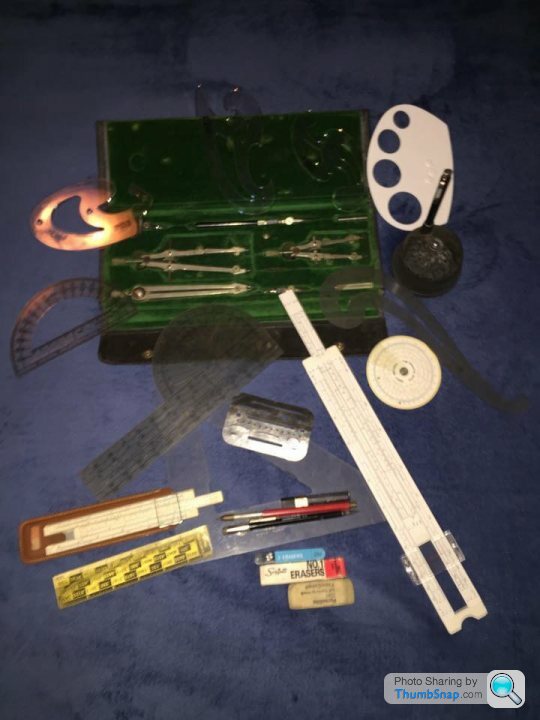
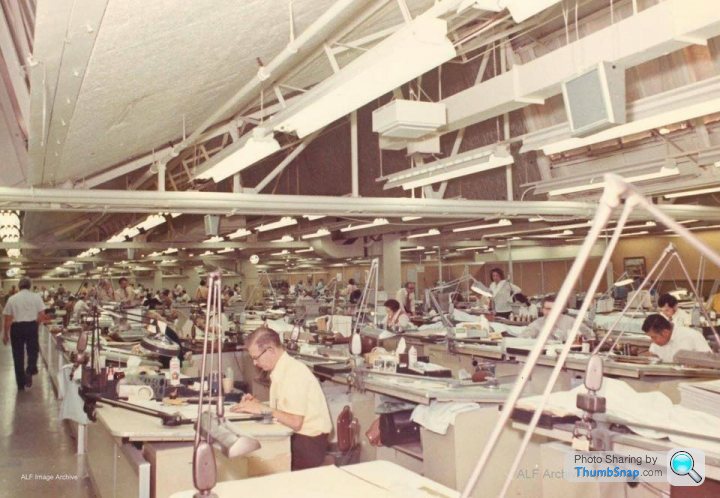
Some of the “hi tech” tools I used as Design Engineer on the Saturn V Rocket, used to get men to the moon in the 1960s!! Note, no electronic computers! lol. Our Design Engineering work areas, at North American Aviation, were made up of several huge Drawing Rooms to accommodate several hundred engineers. We all had a drafting machine, a florescent light, a wooden stool, a 10” slide rule and pocket protector with about ten pencils! We came to work carrying our coffee in a thermos and our lunch in a metal lunch box (like the black one shown behind the first guy in the next photo.) We did our analysis with the slide rules and the drawings were made on paper utilizing the drafting machines. Few of us had drafting machines at the beginning of the program. The company loaned us new machines and took a dollar or so out of our paychecks until they were paid for! I was making $585 per month!! We were full of enthusiasm and ready to design the Saturn V Rocket and Apollo Capsule. We didn't need no stinking computers! I now think about the advances that have been made during the 50+ years since then in computer technology, including Computer Aided Design software, and realize how much easier our jobs would be today!
The building got very hot in the summer since we had no AC. There were 6 ft. high fans strategically located near the supervisor's areas. The rest of us just dealt with the heat. Occasionally birds would fly into these areas. Each night we made sure to cover our drawings to keep them from dropping their bombs on our drawings. But we were going to the moon!!!


Distantly related...
"From 1964-1968 there was a show called "Voyage to the Bottom of the Sea," which featured a vehicle called "The Flying Sub."
Though fictional, things like that have always been interesting to the military, and the design of the Flying Sub 1 ("FS1") seemed more plausible than most. Somewhere along the line, someone thought, "What the hell, why not?" and talked someone somewhere in the Pentagon to springing for some wind tunnel tests to see if the thing would work at all. ( It's the military, so it took a while for all the paperwork to go through, )
But in 1971, 3 years after the show ended, they actually built a large aeronautical model and began testing at Arnold AFB in Tennessee.
Entirely predictably, it didn't work at all.
Just the same, it's (A) cool and (B) one of only two times I'm aware of where a government agency actually experimented with science fiction TV vehicles ( The other being the Star Fury from Babylon5 ) to see if they'd actually work.
Here's an actual picture of the tests being done."
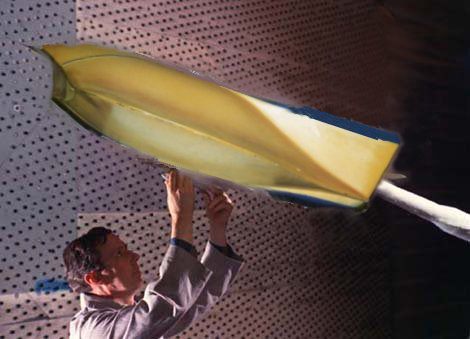
"From 1964-1968 there was a show called "Voyage to the Bottom of the Sea," which featured a vehicle called "The Flying Sub."
Though fictional, things like that have always been interesting to the military, and the design of the Flying Sub 1 ("FS1") seemed more plausible than most. Somewhere along the line, someone thought, "What the hell, why not?" and talked someone somewhere in the Pentagon to springing for some wind tunnel tests to see if the thing would work at all. ( It's the military, so it took a while for all the paperwork to go through, )
But in 1971, 3 years after the show ended, they actually built a large aeronautical model and began testing at Arnold AFB in Tennessee.
Entirely predictably, it didn't work at all.
Just the same, it's (A) cool and (B) one of only two times I'm aware of where a government agency actually experimented with science fiction TV vehicles ( The other being the Star Fury from Babylon5 ) to see if they'd actually work.
Here's an actual picture of the tests being done."

From J Harvey LeBlanc
How to Destroy a Rocket-----In an earlier post, I described how I had designed the Pneumatic Servicing Systems for the S-II stage of the Saturn-V. A set of this hardware had been provided to the Kennedy Space Center as well as the Mississippi Test Facility (MTF), now called Stennis. In 1966, we had shipped the S-II-T test stage to MTF for a series of static firing test. During one of the test a fire had developed in one of the J-2 engines. Three days later, checks were underway to determine the cause of a leak that had resulted in the fire.
At the time of the accident, the S-II-T was being pressurized for a leak check by the second shift Complex Coordinator, who was not a Certified Test Conductor. He was authorized to conduct only routine pressurizations up to 8 psig. The purpose of the test was to attempt to pressurize down to one of the J-2 engines at 8 psig, so that a leak check of the engine pre-valve could be performed with a soap solution.
During the first shift, the pressure sensing line had been disconnected from the LH2 tank causing the pressure indicators on the control panel to become inoperative. The second shift Complex Coordinator was not aware of this and started to pressurize the tank for the test. He made five attempts to pressurize the tank, but received no pressure indication on the control panel, because the instrumentation was not connected. Believing that the LH2 tank relief valve was failed open, he then authorized the closing of a facility blocking valve downstream of the tank relief valve. Not a smart thing to do!! In fact, this stage relief capability had worked on the first four pressurization cycles, protecting the tank. However, he believed the tank pressure to be 0 psig (as that is what his control panel indicated). On the fifth cycle, with the control panel still reading zero, the pressure in the tank actually continued to rise as there was no relief valve allowed to open…….until S-II-T exploded!
This happened on May 28, 1966. I was attending a Memorial Day weekend pool party when I received a panic call saying that the LH2 Tank Pressurization System I designed, had just blown the S-II-T Stage!!!! Panic Time!!!
I was on the next flight from California to Mississippi to determine what had really happened. After a complete review of all the data and the flawed test procedure that had been used it became quite evident that my design was not to blame.
These lessons learned from this accident were utilized to implement the following changes:
• Procedures for test engineers updated to ensure that all operations were completely detailed.
• Special instructions prepared, so that when one shift handed over to another the complete test configuration was fully understood.
• Only trained and authorized test engineers allowed to perform specific tests.
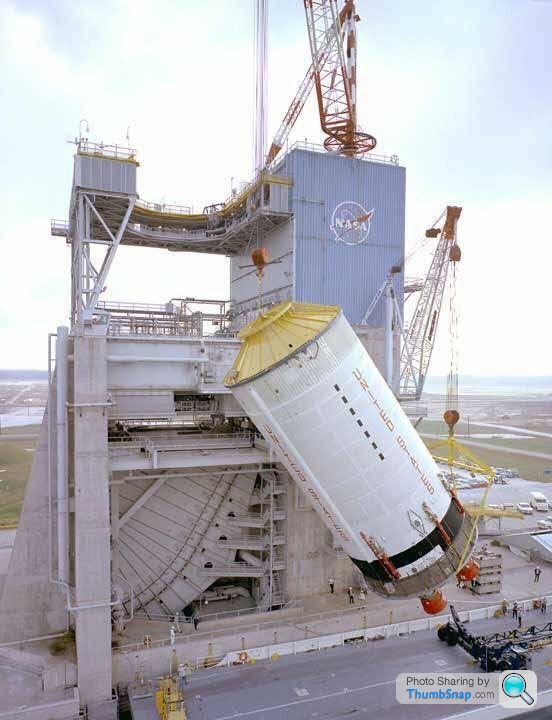
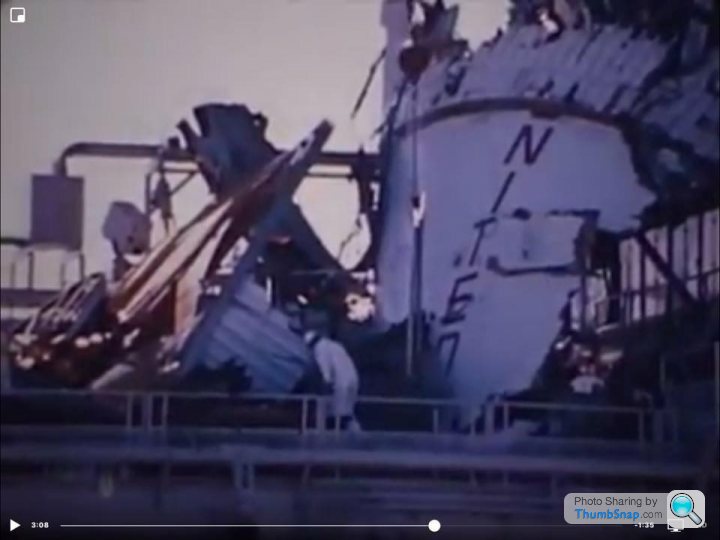
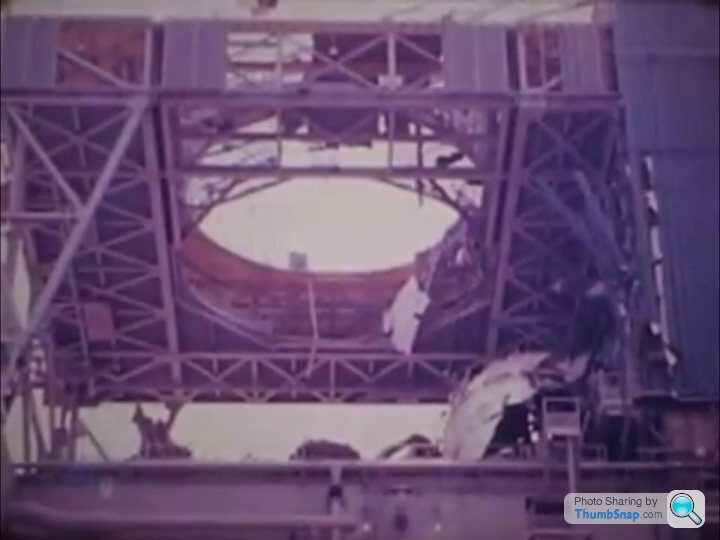
How to Destroy a Rocket-----In an earlier post, I described how I had designed the Pneumatic Servicing Systems for the S-II stage of the Saturn-V. A set of this hardware had been provided to the Kennedy Space Center as well as the Mississippi Test Facility (MTF), now called Stennis. In 1966, we had shipped the S-II-T test stage to MTF for a series of static firing test. During one of the test a fire had developed in one of the J-2 engines. Three days later, checks were underway to determine the cause of a leak that had resulted in the fire.
At the time of the accident, the S-II-T was being pressurized for a leak check by the second shift Complex Coordinator, who was not a Certified Test Conductor. He was authorized to conduct only routine pressurizations up to 8 psig. The purpose of the test was to attempt to pressurize down to one of the J-2 engines at 8 psig, so that a leak check of the engine pre-valve could be performed with a soap solution.
During the first shift, the pressure sensing line had been disconnected from the LH2 tank causing the pressure indicators on the control panel to become inoperative. The second shift Complex Coordinator was not aware of this and started to pressurize the tank for the test. He made five attempts to pressurize the tank, but received no pressure indication on the control panel, because the instrumentation was not connected. Believing that the LH2 tank relief valve was failed open, he then authorized the closing of a facility blocking valve downstream of the tank relief valve. Not a smart thing to do!! In fact, this stage relief capability had worked on the first four pressurization cycles, protecting the tank. However, he believed the tank pressure to be 0 psig (as that is what his control panel indicated). On the fifth cycle, with the control panel still reading zero, the pressure in the tank actually continued to rise as there was no relief valve allowed to open…….until S-II-T exploded!
This happened on May 28, 1966. I was attending a Memorial Day weekend pool party when I received a panic call saying that the LH2 Tank Pressurization System I designed, had just blown the S-II-T Stage!!!! Panic Time!!!
I was on the next flight from California to Mississippi to determine what had really happened. After a complete review of all the data and the flawed test procedure that had been used it became quite evident that my design was not to blame.
These lessons learned from this accident were utilized to implement the following changes:
• Procedures for test engineers updated to ensure that all operations were completely detailed.
• Special instructions prepared, so that when one shift handed over to another the complete test configuration was fully understood.
• Only trained and authorized test engineers allowed to perform specific tests.



Extreme slomo of Atlas Centaur AC-5 launch failure in 1956. Ignition is at 1 min
https://www.youtube.com/watch?v=LHAn5IIYYlU&fe...
https://www.youtube.com/watch?v=LHAn5IIYYlU&fe...
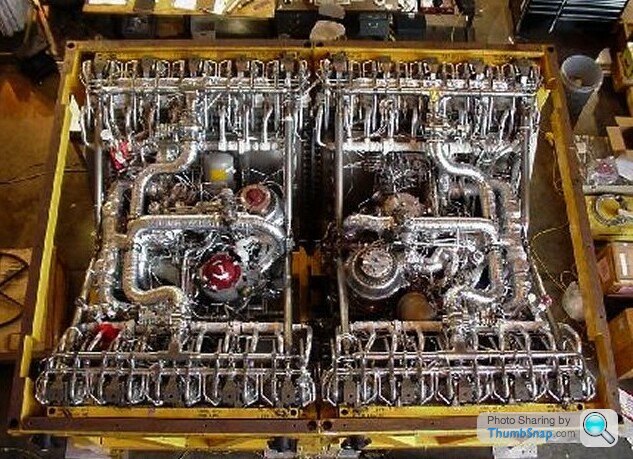
Top down view into a pair of XRS2200 linear aerospike engines. These are derived from the J-2 used on the Saturn V second and third stages. They were half scale prototypes for the RS2200 on the Venture Star. The pair would power the X-33 half scale test vehicle for the Venture Star, but the X-33 never flew before its cancellation.
The Nimbus B weather satellite carried a SNAP-19 RTG in 1968. Its launch vehicle suffered a malfunction and had to be destroyed. The remains of the RTG were later found on the floor of the Pacific. The RTG heat source was in such good condition that after some refurbishment it was later flown on Nimbus 3.
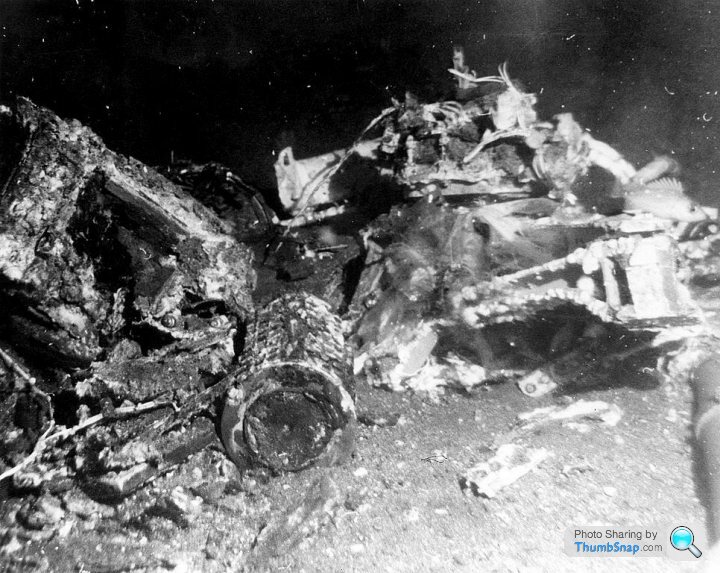
Remains of the Nimbus B satellite on the seabed - the RTG is the cylindrical object

Remains of the Nimbus B satellite on the seabed - the RTG is the cylindrical object
V8LM said:
Sorry for the slightly (?) OT question but didn’t wish to start a new thread.
The suits worn by the Apollo Commander and Lunar Module Pilot (ie those that flew the LEM and walked on the Moon) had a grey/silver patch on the back, whereas the suit of the Command Module Pilot didn’t.
What was the reason?
Do you have any pics ?The suits worn by the Apollo Commander and Lunar Module Pilot (ie those that flew the LEM and walked on the Moon) had a grey/silver patch on the back, whereas the suit of the Command Module Pilot didn’t.
What was the reason?
Purely a guess, but maybe padding for the life support backpack which the CMP was never required to use ?
Shuttle anecdote from J Harvey LeBlanc
"The Drag Chute Problem.....
During landing, the Orbiter touches down on the runway at a speed of about 220 MPH. In the beginning of the Shuttle Program, we experienced severe tire and brake wear because of the very hard breaking required to get the Orbiter stopped on the available runway. In order to eliminate this problem a drag chute system, similar to those used to stop dragsters, was designed, developed and added to the Orbiter in 1992.
The drag chute is 40 ft. in diameter and is stowed in a compartment on the back end of the Orbiter. During launch and until landing, the drag chute system is protected by a door which seals off the compartment. During landing, a pyrotechnic mortar is used to deploy a smaller 9 ft. pilot chute away from the back of the Orbiter and to blow off the compartment door. The force produced by the inflated pilot chute applies tension to two cut-knives that sever the cords holding the 130 lb. main chute pack in the compartment. The inflated pilot chute also pulls out the main drag chute, which in turn is also inflated and slows down the Orbiter.
On February 2, 1962, astronaut John Glenn became the first American to Orbit the Earth. He was in a Mercury capsule called Friendship 7 for that very historic flight. After he retired from NASA he became an Ohio US senator and served in that capacity from 1974 until 1999. In 1998 he was selected to fly on the Space Shuttle. I can remember the extreme amount of national publicity that preceded Senator Glenn's flight on the Space Shuttle. The press and the nation were very excited since he was a US senator and the fact that he was 77 years old, meant that he was going to be the oldest person to fly in space. The national press came to our plant to interview people that were going to be involved with the flight and also people that knew Senator Glenn. I was very honored to be selected by Boeing to represent the company in this special national TV program along with former astronaut Buzz Aldrin, an old friend of Senator Glenn.
As Design Director of Propulsion and Mechanical Systems, I was requested to be in the Mission Support Room at our Downey, CA. plant for this launch. The countdown went well, except that during lift off something was seen falling from the back of the Orbiter. This was seen using one of the many video cameras installed around the launch pad. After reviewing the video in slow motion many times, we concluded that the falling object was probably the door which was used to cover the drag chute. We were able to confirm this several hours later when the door was found on the launch pad.
So, we now had an Orbiter in flight without a door to protect our drag chute. Not a good thing, since this area had been very close to the extreme heat and flames from the three main engines during the first 8 minutes of launch. This became an extremely uneasy situation because no one knew the condition of the now exposed main chute pack, retaining ties, or the temperature of the mortar pyrotechnic cartridge, and it suggested the chute might deploy at any time during the flight.
But, again, in true manned spacecraft fashion, many of us groundlings spent the next several days (and nights) thinking up all the horrible things that could happen if the chute inadvertently deployed----and of course, what to do about it. This is what we Rocket Scientist refer to as "what if games!" We considered such things as: if it deployed in space, flailed around, and became wrapped around the vertical tail---- would the rudder and speedbrakes still function? In such a case, would the chute burn away during reentry into the atmosphere, or hang around and cause approach and landing problems? Or what about this one----what if it deployed just as the Orbiter was about 40 ft. altitude during landing approach and causing the Orbiter to crash short of the runway at over 220 MPH?
This is the one that really gave us nightmares for the next few days!
There were suggestions made to deploy the drag chute on orbit and just get rid of it prior to reentry, since we knew the Orbiter could land without it, with just extra tire and brake wear. I shot this proposal down when I pointed out that the entire operation of the drag chute system was based on the chute filling with air, causing it to open----but there is no air in space so it would not work!!
The normal way of engineers solving a problem with a space vehicle is to conduct analysis to prove that something will work, then to go conduct tests to verify that your analysis is correct. In this case we conducted thermal analysis which indicated that the radiant heat from the main engines firing, that close to the drag chute pack, would not significantly damage the pack. However, we had no way of verifying by tests that our analysis was correct.
The day the Orbiter and crew were to land many of us were glued to the TVs waiting to see the approach and landing. To say that we were holding our breaths, would be an understatement! A decision was made to not use the drag chute for this landing and to just apply the hard braking required to bring the vehicle to a stop. Fortunately, none of the horrible things we had feared happened and the vehicle landed safely to the joy and cheers of many happy engineers. Post flight inspections showed signs of enough heat to melt some non-structural Nylon on the face of the pack, but otherwise the chute and compartment were in good shape. Our analysis had been correct! A specific cause for the anomaly was never duplicated in test, but tolerances and controls on rigging the door were tightened up and no further problems occurred. Edit: Analysis of the door breakaway retention pins determined that there was inconsistency with the pin diameters. No two were the same, but they were all inadequately too small in diameter. The vendor was notified and corrective actions taken. Also, the pin material was changed from aluminum to steel."
"The Drag Chute Problem.....
During landing, the Orbiter touches down on the runway at a speed of about 220 MPH. In the beginning of the Shuttle Program, we experienced severe tire and brake wear because of the very hard breaking required to get the Orbiter stopped on the available runway. In order to eliminate this problem a drag chute system, similar to those used to stop dragsters, was designed, developed and added to the Orbiter in 1992.
The drag chute is 40 ft. in diameter and is stowed in a compartment on the back end of the Orbiter. During launch and until landing, the drag chute system is protected by a door which seals off the compartment. During landing, a pyrotechnic mortar is used to deploy a smaller 9 ft. pilot chute away from the back of the Orbiter and to blow off the compartment door. The force produced by the inflated pilot chute applies tension to two cut-knives that sever the cords holding the 130 lb. main chute pack in the compartment. The inflated pilot chute also pulls out the main drag chute, which in turn is also inflated and slows down the Orbiter.
On February 2, 1962, astronaut John Glenn became the first American to Orbit the Earth. He was in a Mercury capsule called Friendship 7 for that very historic flight. After he retired from NASA he became an Ohio US senator and served in that capacity from 1974 until 1999. In 1998 he was selected to fly on the Space Shuttle. I can remember the extreme amount of national publicity that preceded Senator Glenn's flight on the Space Shuttle. The press and the nation were very excited since he was a US senator and the fact that he was 77 years old, meant that he was going to be the oldest person to fly in space. The national press came to our plant to interview people that were going to be involved with the flight and also people that knew Senator Glenn. I was very honored to be selected by Boeing to represent the company in this special national TV program along with former astronaut Buzz Aldrin, an old friend of Senator Glenn.
As Design Director of Propulsion and Mechanical Systems, I was requested to be in the Mission Support Room at our Downey, CA. plant for this launch. The countdown went well, except that during lift off something was seen falling from the back of the Orbiter. This was seen using one of the many video cameras installed around the launch pad. After reviewing the video in slow motion many times, we concluded that the falling object was probably the door which was used to cover the drag chute. We were able to confirm this several hours later when the door was found on the launch pad.
So, we now had an Orbiter in flight without a door to protect our drag chute. Not a good thing, since this area had been very close to the extreme heat and flames from the three main engines during the first 8 minutes of launch. This became an extremely uneasy situation because no one knew the condition of the now exposed main chute pack, retaining ties, or the temperature of the mortar pyrotechnic cartridge, and it suggested the chute might deploy at any time during the flight.
But, again, in true manned spacecraft fashion, many of us groundlings spent the next several days (and nights) thinking up all the horrible things that could happen if the chute inadvertently deployed----and of course, what to do about it. This is what we Rocket Scientist refer to as "what if games!" We considered such things as: if it deployed in space, flailed around, and became wrapped around the vertical tail---- would the rudder and speedbrakes still function? In such a case, would the chute burn away during reentry into the atmosphere, or hang around and cause approach and landing problems? Or what about this one----what if it deployed just as the Orbiter was about 40 ft. altitude during landing approach and causing the Orbiter to crash short of the runway at over 220 MPH?
This is the one that really gave us nightmares for the next few days!
There were suggestions made to deploy the drag chute on orbit and just get rid of it prior to reentry, since we knew the Orbiter could land without it, with just extra tire and brake wear. I shot this proposal down when I pointed out that the entire operation of the drag chute system was based on the chute filling with air, causing it to open----but there is no air in space so it would not work!!
The normal way of engineers solving a problem with a space vehicle is to conduct analysis to prove that something will work, then to go conduct tests to verify that your analysis is correct. In this case we conducted thermal analysis which indicated that the radiant heat from the main engines firing, that close to the drag chute pack, would not significantly damage the pack. However, we had no way of verifying by tests that our analysis was correct.
The day the Orbiter and crew were to land many of us were glued to the TVs waiting to see the approach and landing. To say that we were holding our breaths, would be an understatement! A decision was made to not use the drag chute for this landing and to just apply the hard braking required to bring the vehicle to a stop. Fortunately, none of the horrible things we had feared happened and the vehicle landed safely to the joy and cheers of many happy engineers. Post flight inspections showed signs of enough heat to melt some non-structural Nylon on the face of the pack, but otherwise the chute and compartment were in good shape. Our analysis had been correct! A specific cause for the anomaly was never duplicated in test, but tolerances and controls on rigging the door were tightened up and no further problems occurred. Edit: Analysis of the door breakaway retention pins determined that there was inconsistency with the pin diameters. No two were the same, but they were all inadequately too small in diameter. The vendor was notified and corrective actions taken. Also, the pin material was changed from aluminum to steel."
Apollo related...
From Michael Okuda ( American graphic designer best known for his work on Star Trek )
"Our friend, production designer Joseph Hodges was a set designer on Apollo 13. Before that, worked with us on ST:TNG and ST:DS9. He recently told us that during preproduction, Ron Howard and the actors made a field trip to fly on NASA’s KC-135 “Vomit Comet” airplane to experience zero gravity. At this point, the film had planned to fake all the “weightless” scenes using standard mechanical special effects: wire work and teeter-totters.
Joseph saw the video of their antics, and suggested that it might be possible to build sets inside the airplane so that they could film in actual zero gravity. His suggestion was met with disinterest. “[They] said I was crazy,” recalled Joseph. To be fair, no one had ever used the Vomit Comet for a movie, and it would be an expensive, difficult operation. Still, standard Hollywood tricks for simulating weightlessness simply don’t compare to the graceful freedom of real weightlessness.
The thing is: Joseph Hodges really doesn’t like to take “no” for an answer. “I called NASA to get the dimensions of the plane interior and did a [construction blueprint] drawing anyway.”
That Friday, there was a production meeting of the producers, director, and department heads. Recalls Joseph, “The production designer called me to say that he needed me to draw blueprints of the sets in the plane.” He needed them in a big hurry and had to be done by the following Monday. Said Joseph, “I told him they were already done, and I took them right over to the meeting.”
Turns out that, unbeknownst to Joseph, Steven Spielberg had just seen the video of Ron Howard and the actors cavorting in zero gravity and had made the same suggestion, and now everyone loved the idea. It seems that when a mere set designer has an idea, it’s one thing, but when a world-famous movie director has the same suggestion, it’s a MUCH better idea!"
From Michael Okuda ( American graphic designer best known for his work on Star Trek )
"Our friend, production designer Joseph Hodges was a set designer on Apollo 13. Before that, worked with us on ST:TNG and ST:DS9. He recently told us that during preproduction, Ron Howard and the actors made a field trip to fly on NASA’s KC-135 “Vomit Comet” airplane to experience zero gravity. At this point, the film had planned to fake all the “weightless” scenes using standard mechanical special effects: wire work and teeter-totters.
Joseph saw the video of their antics, and suggested that it might be possible to build sets inside the airplane so that they could film in actual zero gravity. His suggestion was met with disinterest. “[They] said I was crazy,” recalled Joseph. To be fair, no one had ever used the Vomit Comet for a movie, and it would be an expensive, difficult operation. Still, standard Hollywood tricks for simulating weightlessness simply don’t compare to the graceful freedom of real weightlessness.
The thing is: Joseph Hodges really doesn’t like to take “no” for an answer. “I called NASA to get the dimensions of the plane interior and did a [construction blueprint] drawing anyway.”
That Friday, there was a production meeting of the producers, director, and department heads. Recalls Joseph, “The production designer called me to say that he needed me to draw blueprints of the sets in the plane.” He needed them in a big hurry and had to be done by the following Monday. Said Joseph, “I told him they were already done, and I took them right over to the meeting.”
Turns out that, unbeknownst to Joseph, Steven Spielberg had just seen the video of Ron Howard and the actors cavorting in zero gravity and had made the same suggestion, and now everyone loved the idea. It seems that when a mere set designer has an idea, it’s one thing, but when a world-famous movie director has the same suggestion, it’s a MUCH better idea!"
Another couple of recommendations for reading on Shuttle background
https://www.amazon.com/Without-Smithsonian-History...
and
https://www.amazon.co.uk/Wingless-Flight-Lifting-S...
https://www.amazon.com/Without-Smithsonian-History...
and
https://www.amazon.co.uk/Wingless-Flight-Lifting-S...
On this day in 1961...
First flight of a Saturn rocket, SA-1
https://www.youtube.com/watch?v=BOKpnXDfyUI&fe...
First flight of a Saturn rocket, SA-1
https://www.youtube.com/watch?v=BOKpnXDfyUI&fe...
Gassing Station | Science! | Top of Page | What's New | My Stuff





